It seems most photographers know the acronym IPS, or in-person sales — high-profile photographers champion the process and share their wins on social media. But still, many photographers choose to sell digital files online only. Does IPS really work for every business model? Especially in a whole new era of a coronavirus pandemic and beyond?
For me, shooting on location has always been the reality; I’ve never had a studio or dedicated sales room. I’m a family photographer working on the beach in Florida at sunset. Often, my clients are on vacation and returning home within days of our session. When I first became interested in IPS, the sales averages I was seeing seemed astronomical and unreachable, but I decided to give it a try just to see what would happen. I went into that first sales appointment almost five years ago with nothing more than a borrowed laptop and some mocked-up wall designs. I had my first four-figure sale that day and I was hooked.
Over the years I’ve streamlined my process to become more profitable, more mobile, and more efficient. Photographing fewer than 60 clients a year, I’m able to earn six figures because of the steps I’ve put in place, the pricing I offer, and the quality of my products. Typically, a few days after a sunset beach shoot, I visit the clients’ hotel or vacation home to reveal their images and close the sale. In the current climate of Covid-19 concerns, I offer online meetings for all clients who would prefer to not have a face-to-face reveal.
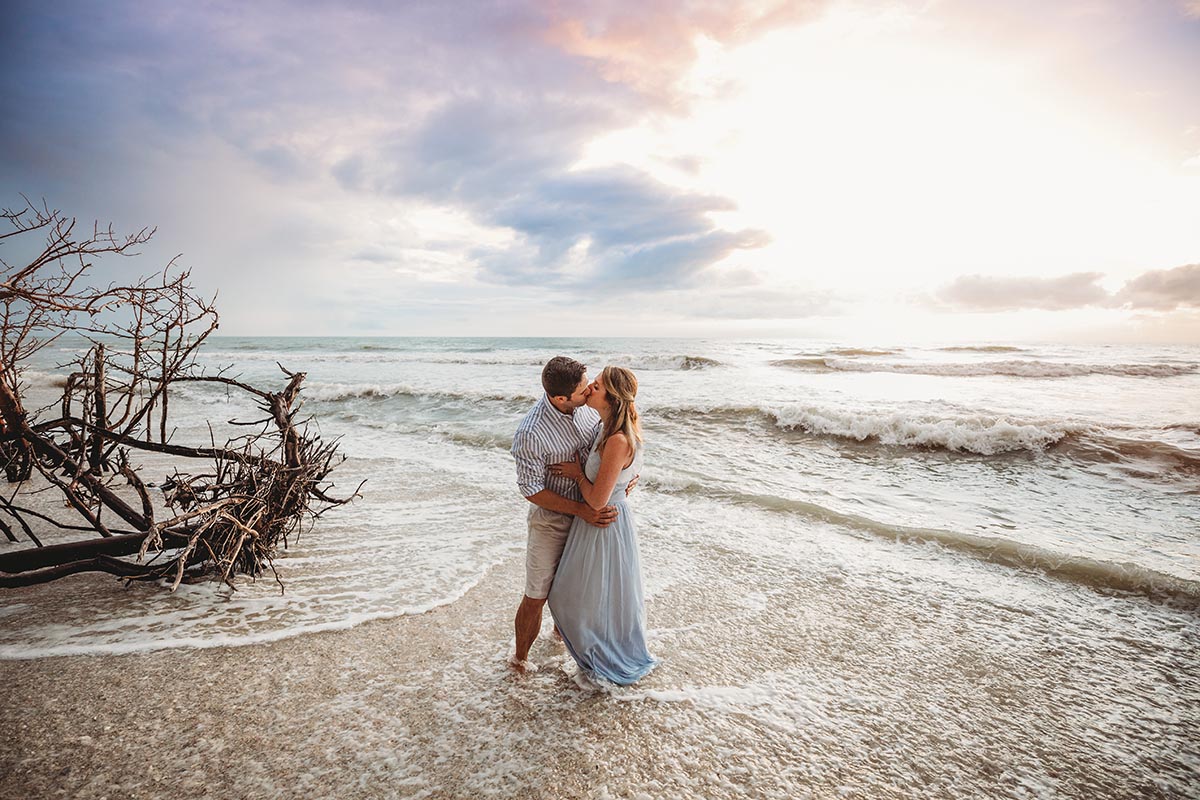
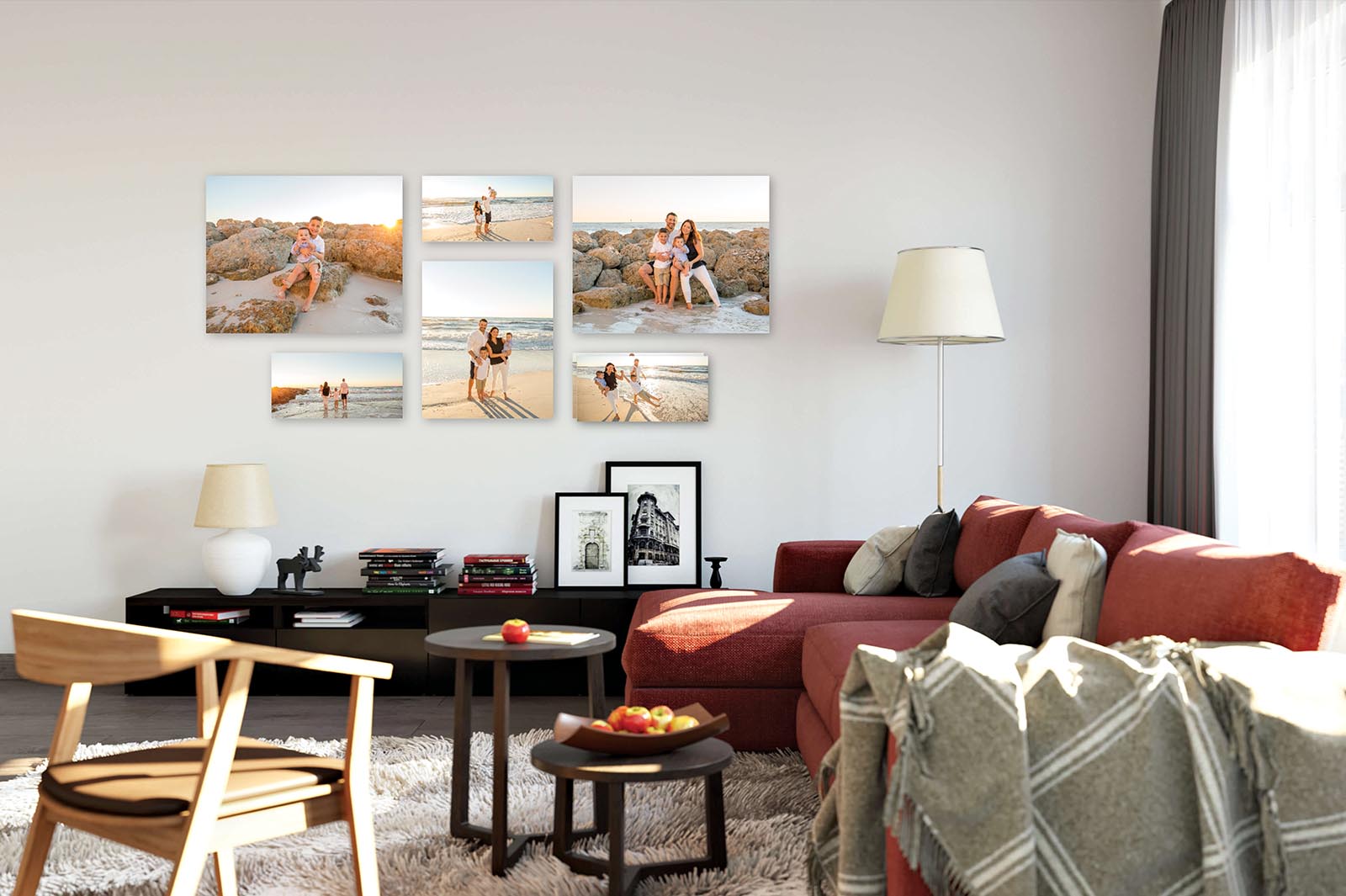
The key is to set expectations from the beginning.
Scheduling the IPS session is another step in the booking process. Clients understand up front that this is how they will view their photos and place an order. I present the options for a virtual reveal or an in-person reveal upon booking so that anyone who is not comfortable meeting with me in person is still able to have the full IPS experience. I want clients to know I am sensitive to their safety concerns.
If the client opts for the reveal at their home, rental, or hotel, I maintain a social distance and use masks if desired. My preference now is to limit those in attendance to just the decision makers instead of the whole family.
Some local clients opt to meet in their home. This can be advantageous because the photographer can evaluate their space, and give a professional opinion on where their wall art would look amazing. It’s important to bring at least one large wall art sample so clients can see for themselves that bigger art is more impactful. Seeing products in real life opens clients’ eyes to possibilities they hadn’t imagined.
Whenever possible in advance, I have the client take pictures of their wall spaces and text them to me. Otherwise, I rely on the stock walls provided in my design software to show them the possibilities. Such programs are an invaluable tool in selling wall art, and an absolute necessity if you want to give IPS a try. Fundy, Swift Galleries, ProSelect, and Shoot and Sell accomplish the same goal, which is to show your clients their images in various art forms hanging on their own walls.
Remember, you are the lead designer. A few gallery walls with your showstopper images will wow your clients and make them fall in love with the display you’ve created. I like to show the images on metal, acrylic or in frames and let the client choose which product best suits their décor. When they see my samples, they are usually drawn to one in particular at the outset.
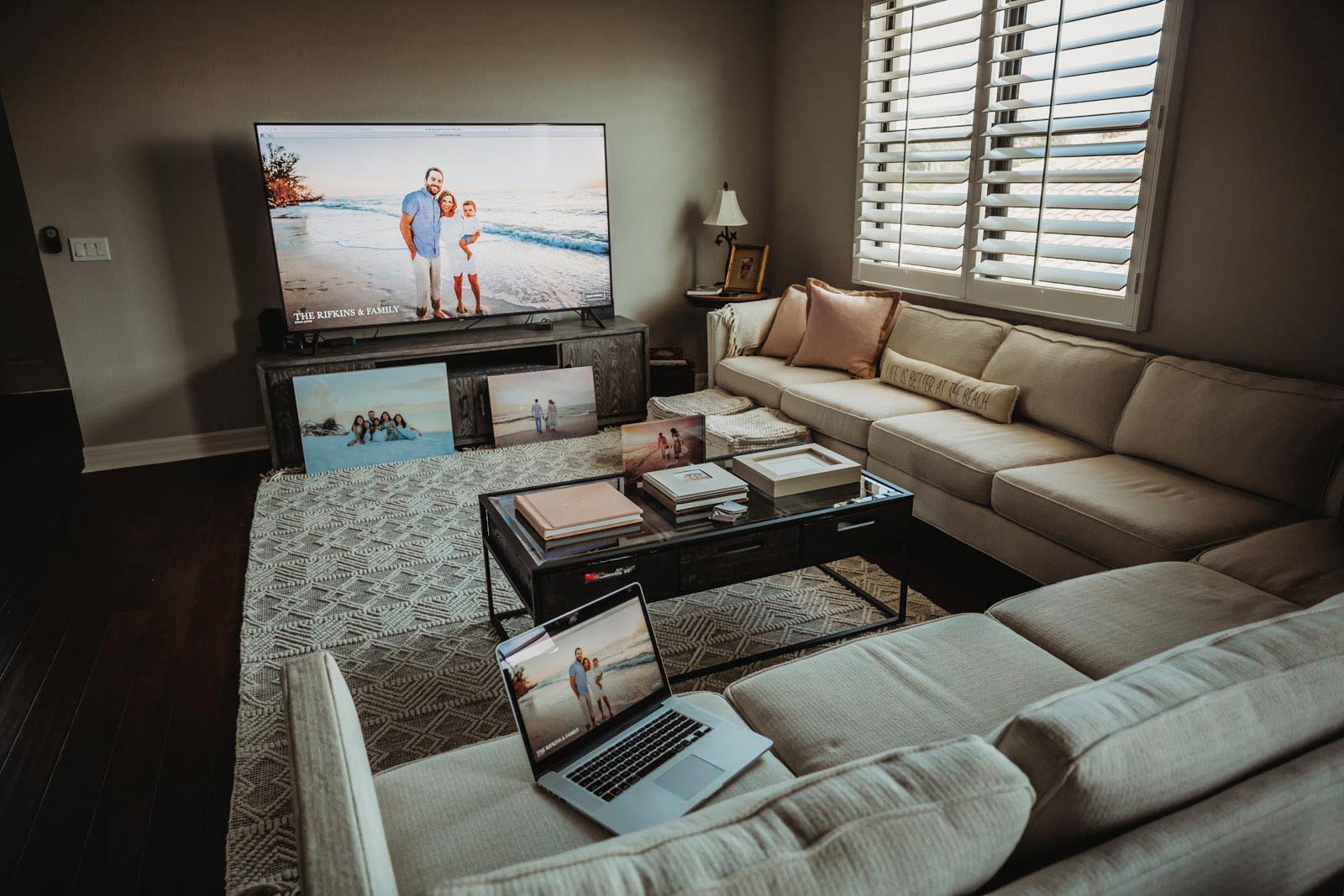
Choose quality products to sell.
As soon as I arrive at the sales meeting, I pull out samples for them to peruse while I set up the presentation. I bring two or three albums, album cover swatches, two large wall portraits in different formats (the bigger, the better), and a few frame corners and a fine-art print to show the quality of the framed art I sell.
I take large wall art samples of products that are less fragile and transport easily. Metals, for example, are extremely durable.
Non-traditional products that clients haven’t seen before usually carry a bigger wow factor over things they can find on their own, such as canvas. My goal is to show high end, luxury products that justify the higher price tag.
Remember to keep it simple. You want to keep your travel load light, so packing the biggest product in terms of revenue is wise.
For clients who opt for an online IPS meeting, I take the products they are interested in to the photo session so they have a chance to see them in person before the screen share reveal. I’ve asked them about products they are considering in my questionnaire, and bring those items to the shoot. As we conclude, I ask them to peek at the album covers or wall portraits I have in my car and they are always eager to take a look.
5 Must-haves for a successful IPS session:
1. Product samples.
What do you want to sell? Keep it simple and profitable.
2. Wall designs.
Consider Fundy, ProSelect, Swift Galleries, or Shoot and Sell.
3. Pre-designed album.
I use KISS or Fundy to design and share albums.
4. Tape measure.
Important for knowing what sizes will work best.
5. Ability to collect payment.
You’ll need a Square credit card reader or something similar.
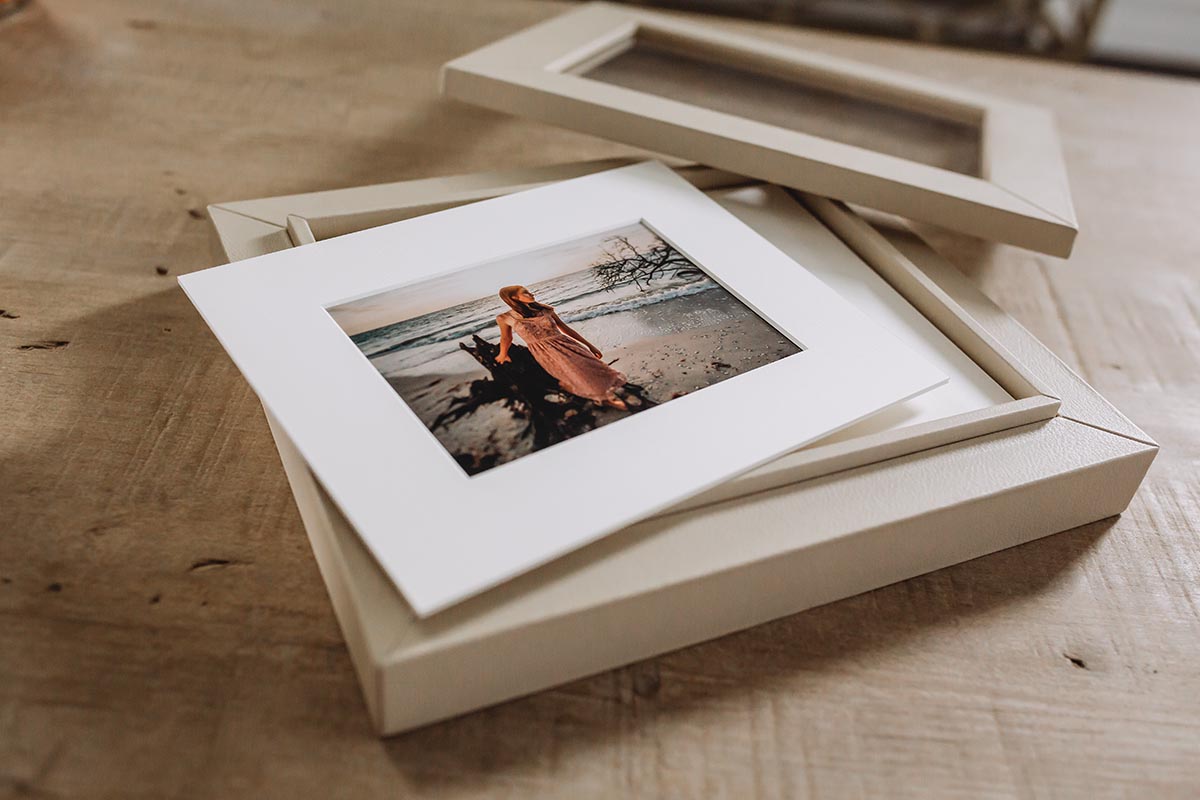
Develop an IPS session flow.
There are three steps to my reveal appointments. First is the slideshow, then the wall and album presentation, and the final step is the order.
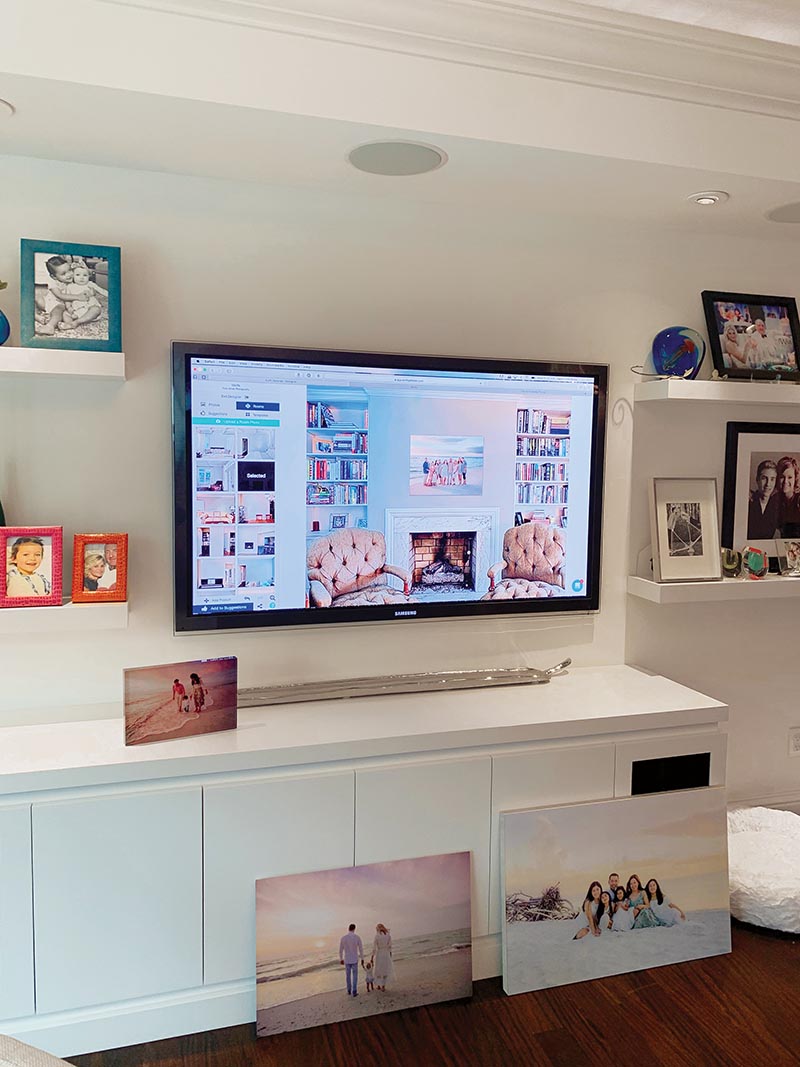
1. Slideshow:
If we meet in the client’s home, I connect my laptop to their TV using an HDMI cord or Apple TV. If I meet on location in a public place, I use my laptop, and if I do a virtual reveal with someone who chooses not to meet in person, I use a free online screen share program like Zoom.
There is no difference in the presentation process for those who opt for an online meeting, aside from how the clients get to see the sample items. The opportunity for a large sale is there either way. By scheduling a session, the client has already indicated that family photos are important to them, and that they are willing to invest in these moments despite the challenging times we find ourselves in.
Clients watch the slideshow set to music while I sit back quietly. I then tell them I want to show them what we can do with their images, and I show four pre-designed walls. The more images I can show together in a collage or display, the higher chance I have of selling a grouping versus just one wall portrait.
2. Wall and album presentation.
Next, I show a virtual album I’ve designed with KISS software. Clients often don’t realize how much they’ll love something until they see it, so it’s worth the 10 minutes to do the design work. If they don’t buy the album, I’ve lost only a few minutes putting it together, but if they do purchase one, I can add a four-figure product to the order.
3. Order.
The last step in my process is to write up the order, have the client sign-off that all sales are final, and take the payment.
Clients are prepared for this from the very first point of contact with me, when I discuss how fun and easy the reveal is over the phone. I have them initial in their contract when booking that all members of the family who are taking part in the ordering process understand how it works; I talk about it at the session; and I send reminders the day before the meeting outlining how long it will take and reminding all decision makers to be present for the purchase.
Does all that preparation mean I never run into objections or hiccups? Of course not! I always stick to my policies, as nicely as possible, and take my client’s order before I leave. Not every client will be a big spender, but the joy on their faces as they see their images for the first time will be so rewarding.
My IPS tool kit:
MacBook Pro laptop, Square credit card reader, KISS 12×12-inch and 10×10-inch Albums along with linen and leather swatches, HDMI cord, a leather Graphistudio SueBryce Collection Reveal Box with 10 matted images inside, an 8×12-inch Acrylic Photo Block from Color Inc., order forms, a Musea 8×12-inch matted and deckled fine art print and a small selection of Musea frame corners to show how the print would appear in the various frames, and business cards.
I also carry a 20×30-inch acrylic or framed canvas from Graphistudio and a 16×24-inch metal print from Color Inc. (these are my durable wall portraits that travel easily). Everything else fits in my MobileRep RepRoller sales cart bag so my arms are not weighed down.
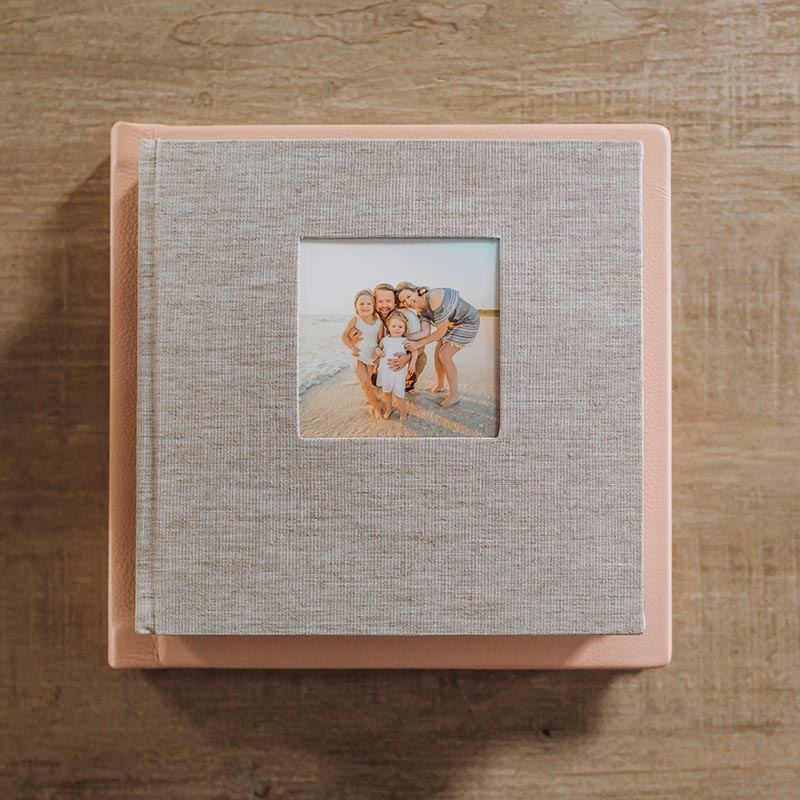
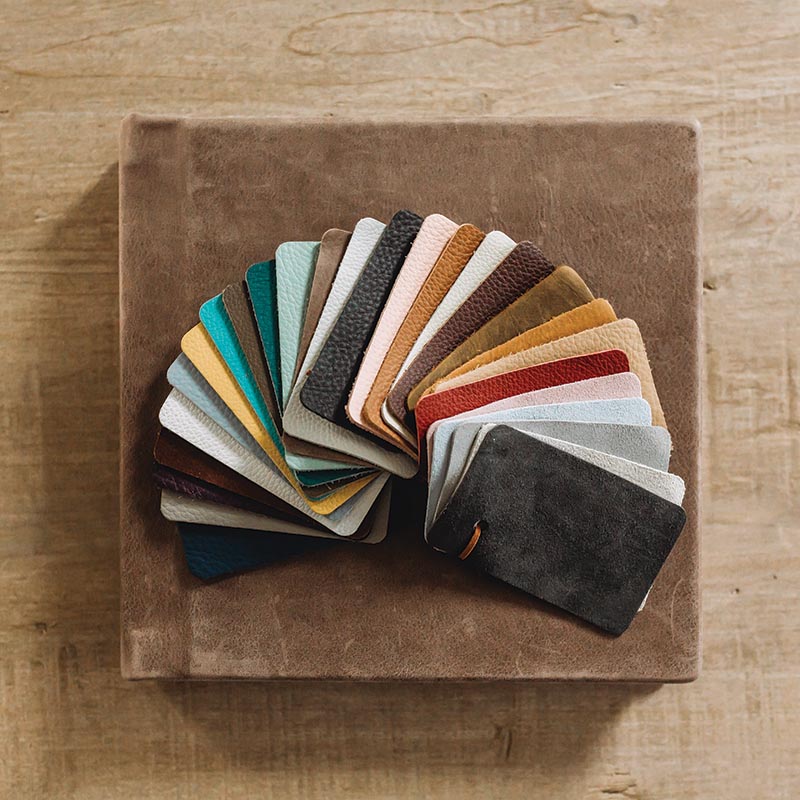

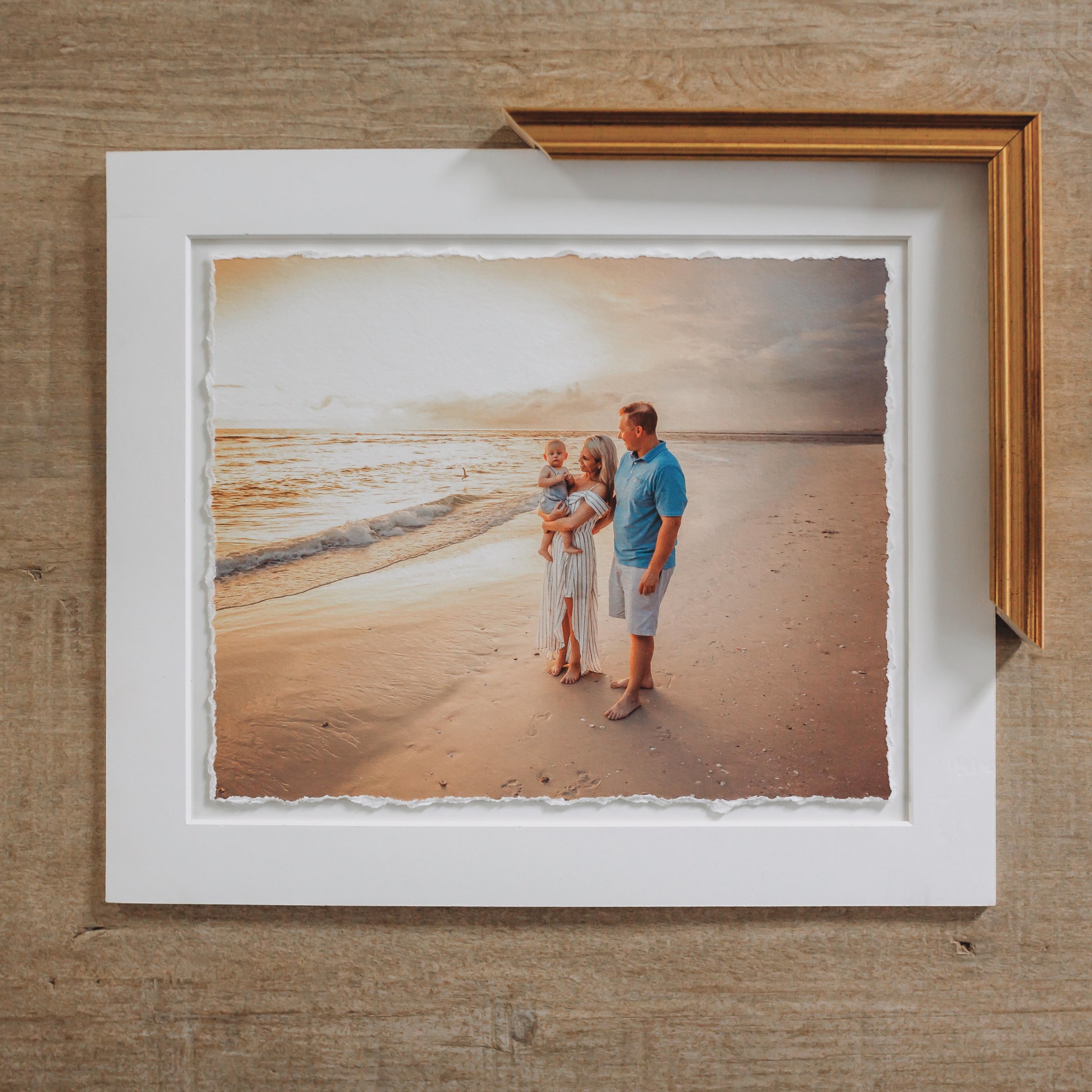
Got objections? Bring ’em on!
I don’t have a studio.
You don’t need a studio to try IPS. Many locations will do the trick, including a coffee shop, common area, or the client’s home. Zoom meetings are great for those who’d prefer virtual reveal sessions.
Clients will be too distracted in their homes.
Just not true. Kids, pets, phones — I’ve never had distractions hinder a sale.
I’m not a salesperson and don’t want to be.
I hear you. But I don’t consider myself a salesperson. I’m merely putting on a presentation and allowing my clients to make their selections. I can help with suggestions and offer my opinion, but I am not pushing the sale. When you go to your reveal session prepared, the images will sell themselves.
IPS takes too much time.
A typical IPS session takes an hour, sometimes less. You just have to be prepared and have an efficient workflow.
Selling digitals is so much easier.
If you could double your annual revenue, would you feel it was worth the time? Short of raising your prices year after year, your greatest opportunity for increasing your earnings is to upsell. Don’t assume every single client wants to be left to print on their own at consumer-grade labs

With IPS, you can offer full service to your clients.
Completing the shoot and uploading the gallery is only half the race; you have to take those clients all the way to the finish line by making sure their images are printed. It takes an extra two to three hours to service an IPS client compared to providing digital files only, but the return can be up to 10 times greater. Average that out over a year and then decide if IPS is worth your time. IPS sets you apart from the rest; you can offer clients a service that is unique and personalized and puts customer service at the forefront. The added bonus is that your business and your bottom line will thank you.
Photos by Kelly Jones
Sample walls were created using Swift Galleries software and real client images.
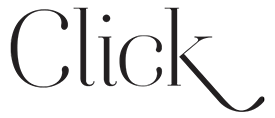
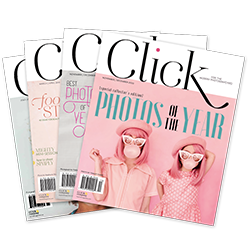

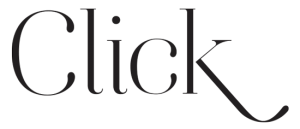
Do you order prints and wall art from each session prior to their reveal and bring them? Or do you bring items from past sessions to give an example?
I would like to know how you carry your large wall samples. The biggest, and nicest looking case I have found is for a 24×36 size framed print. I have a really bad back so I need a better solution myself. I seen your recommendation for the albums with the rep roller case which may work for the laptop, etc but my biggest album is 12×18 (Sal Cincotta Line at H&H), a crystal album from Zno, and I am also bringing a Wood Edge Block Metal (it’s almost 24×36, a modern edge torn framed print 24×36, two 24×36 mounted prints on styrene (metaliic’s), a 16×24 canvas, a 16×24 regular metal print, and a couple 11×14 Lapignappe Canvases (If you haven’t checked them out…I am telling you…unique!). I have two of these soft-sided portfolio cases but my albums don’t fit in them of course. In the end, I am carrying two heavy cases, a portfolio bag that holds my albums and swatch kits, and my laptop bag with my Ipad pro, and sometimes 16 in macbook. I feel like a towering lumberjack trying to haul all of this into a clients home. Have you found any better solutions for larger framed prints? I would like to get to a bigger sized one but I haven’t found anything professional, lightweight but sturdy, and where you could maybe lower some of this stuff down. Thanks for any product referrals~
So, how do you handle when clients insist they’d like to think about their order? I understand this is probably explained when booking. But, does this ever happen? I’m assuming you’re happy to sell them additional products at a later time if it means an increase in sales, but what if they’re afraid to commit to anything at the IPS meeting. How do you address it, and stick to your policy in a polite way?
Hi Nikki! It is clearly laid out at the time of booking verbally, in the contract and in the reveal reminders email that orders are placed at the time of the reveal. They are prepared to make a decision because I have addressed their wall space in advance (to avoid “I don’t know where to put it or if it will fit”), I have shown them the products in person, and they have been prepped for this appointment on numerous occasions (they even initial in the contract that all parties involved have been advised of the policy). They do need to make a decision at the time of the reveal, and you have to be confident enough in your policies and reminder them that they were covered if that ever comes up! Of course they are welcome to add on at a later date if they ask, and that’s a common question when they might want to purchase more down the road. Once you walk out of a reveal without an order, the control over the process is given to the client, you are now at their mercy to respond and get paid and that isn’t what you want.
This plan does make me feel like i could do this!! But how much did you spend to have your sample resources??
Hi Karly! You don’t need to spend a fortune, but remember clients buy what they can see! Even if you just have one great wall sample it gives perspective on size and shows quality. I’d recommend one large wall portrait and one album to start and invest from there as your business allows.